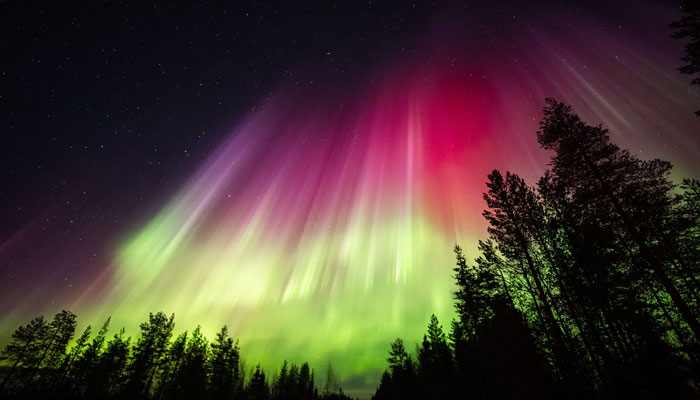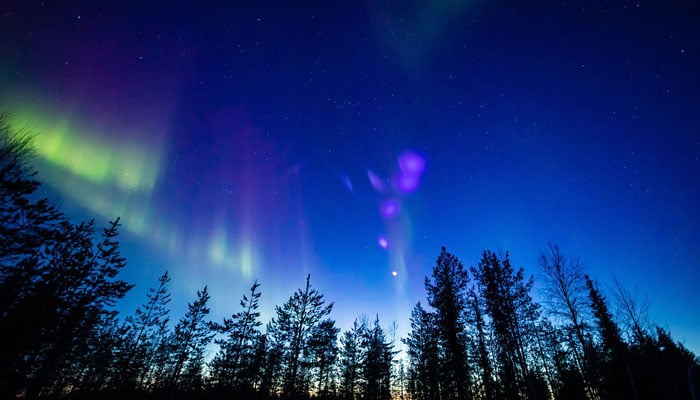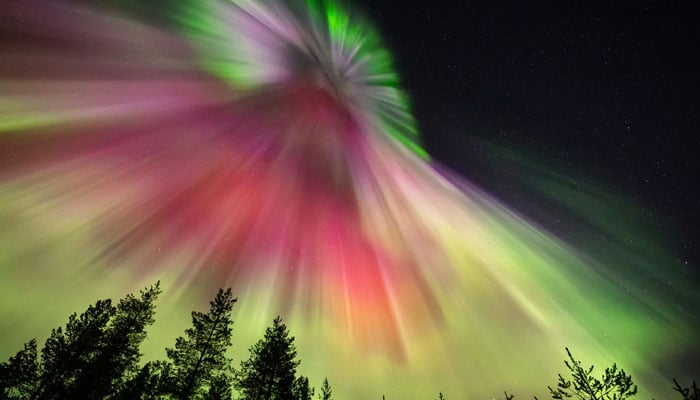Northern lights: When and where these will be visible?
According to University of Alaska Fairbanks, northern lights could be seen from several US states
July 09, 2023

An important event for sky-gazers is approaching as the University of Alaska Fairbanks has announced good news for those who wait to capture a glance of Northern lights, saying that the spectacular view is likely to be visible around a number of US states this week, reported NPR.
According to the university, the northern lights — also called the aurora borealis — could be witnessed across parts of Washington, Idaho, Vermont, Wyoming, New Hampshire, Montana, North Dakota, South Dakota, Minnesota, Nebraska, Massachusetts, Maryland, Ohio, Wisconsin, Michigan, New York, Maine.

The northern lights appear in the sky due to the geomagnetic activity and solar storms on the sun which hit and interact with the Earth's forces affecting satellites used for communications on Earth.
Days earlier, amid rising activity on the sun's surface, National Oceanic and Atmospheric Administration's (NOAA) Space Weather Prediction Center stated that a "strong radio blackout" occurred in some parts of the US recently.
"The flare came from a large and complex region denoted as sunspot group 3354," NOAA said, adding that it led to a "temporary degradation or complete loss of High Frequency (HF) radio signals on some of the sunlit sides of Earth."

"The magnetic field lines near sunspots cause explosions as they reorganise, causing solar flares. It releases a lot of radiation into space. The intense explosion, releases radiation that can interfere with our radio communications on Earth," said Nasa while explaining solar activity.
Apart from this, another concern is solar storm events in which huge amounts of coronal mass ejection (CME) take place, travelling from space to hit the Earth's magnetic field.
Their effects could spark geomagnetic storms. As a result, the satellites, communication, internet connectivity, and GPS could be disrupted or damaged. It could also cause power grid failures, and is a cause behind amazing views of northern lights
Therefore, scientists believe as the sun becomes more active, more sunspots, solar flares, and CMEs are expected to erupt.
The solar storm Sunday led to brief radio blackouts lasting for about 30 minutes in the western US and parts of the eastern Pacific Ocean, according to NOAA.
"When this week began, sunspot AR3354 didn’t exist. Now it is 10 times wider than Earth and still growing. The sunspot burst into view on June 27th, breaching the surface of the sun, then blossoming into a giant over the next 48 hours," noted Spaceweather.com.
According to the NPR report, Wednesday, the storm will be highly visible "low on the horizon from Seattle, Des Moines [Iowa], Chicago, Cleveland, Boston, and Halifax [Nova Scotia]."
On Thursday, the storm will get stronger and can be seen overhead in Minneapolis, Milwaukee; Bay City, Mich., and on the horizon in Salem, Mass.; Boise, Idaho; Cheyenne, Wyo.; Lincoln, Neb.; Indianapolis, and Annapolis, Md.











